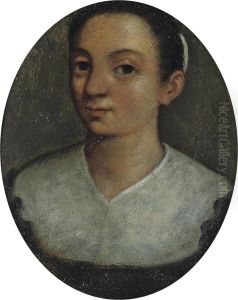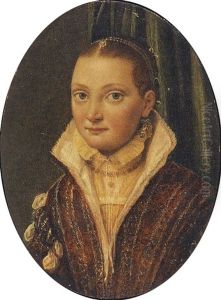Lucia Anguissola Paintings
Lucia Anguissola was an Italian Renaissance painter, born in 1536 in Cremona, Lombardy, into a minor noble family that was unusually supportive of its daughters' artistic ambitions. She was one of six sisters, several of whom, including Sofonisba Anguissola and Europa Anguissola, also became accomplished artists. The Anguissola sisters were among the first female artists to achieve recognition in the male-dominated art world of the 16th century. Lucia's father, Amilcare Anguissola, ensured that his daughters received a well-rounded education that included the fine arts, a rarity for women of their time.
Lucia's training and early works are less documented than those of her sister Sofonisba, who became the most famous of the Anguissola siblings. However, Lucia showed considerable talent in her own right. The few attributed works suggest she specialized in portraiture, a common practice among the Anguissola sisters, who often painted each other, family members, and close acquaintances. Her style was noted for its attention to detail, delicate rendering of features, and the ability to capture the personality and inner life of her subjects.
Despite her skill, Lucia's career was cut short by her early death in 1565, at the age of 29. The exact circumstances of her death are not well-documented, leading to speculation but little concrete information. Because of her short life and the overshadowing fame of her sister Sofonisba, Lucia's contributions to the art world have been somewhat overlooked, and only a handful of works can be securely attributed to her today.
Nevertheless, Lucia Anguissola's work and that of her sisters played a significant role in paving the way for future generations of female artists. By proving that women could produce art of high quality, they challenged the gender norms of their time and opened doors for other women in the arts. Lucia's legacy, while not as well-documented as that of her sister Sofonisba, remains an important example of the early contributions of women to Renaissance art.









